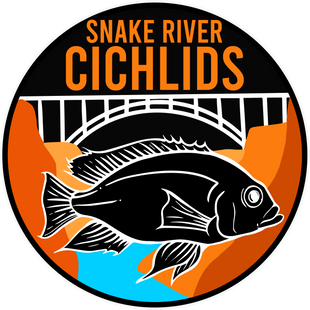Cichlid Color/Sizing
If you’re new to cichlids or ordering online for the first time, we’ve put this guide together to help you know exactly what to expect when purchasing fish from our store. African cichlids are incredibly dynamic fish, and their appearance can change over time based on age, environment, hierarchy, and care. Understanding this ahead of time will help set realistic expectations and ensure a great experience with your new fish.
First, it’s important to know that female cichlids do not develop the bright colors shown in most photos. Females are naturally more subdued in appearance, with softer hues and muted patterns. If strong color is your priority, you’ll want to select fish specifically marked as males.
Color in cichlids is primarily determined by age, size, maturity, and dominance. Larger, older, and more dominant males show the most color. A fish that is small, newly shipped, or low on the social ladder may appear pale or washed out at first. This is completely normal. As your fish grows, settles in, and gains confidence, its color will gradually improve.
It’s also important to understand that Haps typically develop their full coloration later than Peacocks. While Peacocks often begin coloring sooner, Haps may remain pale for much longer, even when they are males. These delays in coloration do not indicate a problem, only that they are still maturing.
Several external factors also play a role in color development, including:
• Stress levels
• Water quality and stability
• Tank size and layout
• Diet and nutrition
• Lighting conditions
• Social structure in the tank
A healthy environment with clean water, minimal aggression, quality food, and appropriate lighting will always support better color development.
Color Development by Size
1–1.5" Unsexed Juveniles
These fish are only a few weeks old and will appear mostly gray or tan. At this stage, strains and species look nearly identical.
1.75–2.25" Unsexed Juveniles
Still too young for reliable gender identification. Males and females look very similar, and coloration is usually not visible.
2.5–3" Unsexed
We may be able to identify the gender of some fish at this size, but many remain difficult to sex accurately.
2.5–3" Males
Fish are a few months old and beginning development. Some may show early signs of color, while others may still look dull. This is especially true for Haps, as they color up later.
3–4" Males
Fish are nearing maturity. Many will show base coloration, but some may still appear washed out depending on dominance and environment.
4"+ Males
This size range typically shows the strongest color potential. These fish are sexually mature and fully capable of displaying vibrant coloration. Even non-dominant males usually show solid color by this point.
Dominance Makes a Big Difference
Of all factors, dominance has the greatest impact on color expression. A dominant male often exhibits brighter colors, stronger patterns, and more confidence than a fish lower in the hierarchy. When new fish arrive, they may fade temporarily due to stress or a change in social structure. Once they settle in and establish their place, color typically improves dramatically.
It can take several weeks for a new fish to breathe easy, claim territory, and reveal its best appearance. We always recommend patience when waiting for new fish to color up.
OB Cichlid Coloration
OB cichlids are especially unique due to their hybrid vigor. Unlike line-bred strains with consistent coloration, OBs vary widely from fish to fish. Each OB is genetically different and may display patterns, blotching, and base colors unlike any other fish, even among siblings.
This is part of what makes OBs special — but it also means no two will look exactly alike.
If you’re looking for a specific color pattern or bold appearance, we strongly recommend checking out our Friday Showcase, where the fish pictured are the exact fish you will receive.

